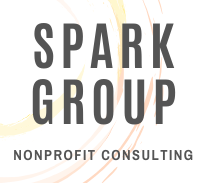3 Tips for Designing Successful Programs
3 Tips for Designing Successful Programs
Imagine this, you are a program director at a nonprofit organization, and you wake up in the middle of the night with a fantastic idea for a brand new program. The next day you rush into work, pull together some volunteers convince some donors to support the project and within a month your new program is ready to launch. Unfortunately for you, two months later, zero clients participated in your shiny new program, because of the lack of initial success, volunteers loose interest, and donors pull funding.
This is obviously a worst-case scenario that would never actually happen to you. However, it highlights the importance of program design! Program design is simply the strategic process of researching and planning for a new program. Many great initiatives fail to launch due to poor planning but with careful consideration, you can set any program up for success. Below are three tips to consider when engaging in your program design process.
Consider your audience
Who will this program benefit? Can you verify that the intended audience wants the program and will utilize the new service? Make sure to conduct a Needs Assessment to collect the input from individuals who will actually use the program. In fact, invite those individuals to work with you. There is no point in designing a program only to find out that the community you serve sees no value in it. Additionally, providing a place at the design table for clients will garner trust and validity.
2. Consider your program’s environment
When designing the new program you want to consider the external environment it will operate within. Who are the major stakeholders in the area that may impact this new program? What similar services are available? What are the structural influences? For example, if you are designing a program for individuals living in poverty, will your program have access to public transportation? Don’t forget about the environment that your program will exist within when designing your new idea.
3. Consider your Theory of Change
Too often programs are designed to address a specific need without thought to why that intervention is the best approach. Take some time early in your design process to develop a Theory of Change. A Theory of Change is a simple statement that describes the intervention and why you think it will result in positive change. Articulating your Theory of Change helps focus your design process and aids in garnering stakeholder support. Volunteers, staff, and funders want to know what the program will do and why it will be successful. A well thought out Theory of Change offers that information.
Spark Group offers a comprehensive process for nonprofit leaders engaging in program design. If you want help turning your exciting idea into a programmatic reality then schedule a free, 30-minute consultation today!
⭐ Join our weekly newsletter where we share tons of exclusive tips, tools, grant opportunities, and resources to our subscribers. Subscribe on the Spark Group home page.




